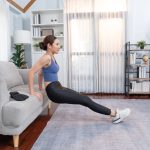1. Understanding the Best Running Shoes for Women
The Best Running Shoes for Women are designed to provide comfort, stability, and performance for runners of all levels. Choosing the right pair affects not only speed and endurance but also injury prevention and confidence. From cushioned soles to responsive midsoles, the perfect shoe balances support with flexibility, enhancing the natural motion of every step. Whether you’re a marathoner or a casual jogger, investing in the Best Running Shoes for Women ensures an enjoyable and efficient running experience.
2. Why Beginners Should Start With Best Running Shoes for Women
For beginners, proper footwear is the cornerstone of a successful running journey. The Best Running Shoes for Women offer cushioning to absorb impact and prevent knee or ankle strain. Unlike generic sneakers, they’re tailored for the biomechanics of a woman’s foot—typically narrower at the heel and wider at the forefoot. Starting with the right shoes encourages good form and reduces fatigue. Brands like Brooks Ghost, Hoka Clifton, and Nike Pegasus provide balanced support ideal for new runners adapting to the rhythm of consistent movement.
3. Perfecting Your Best Running Shoes for Women Fit
The perfect fit for the Best Running Shoes for Women starts with measuring your feet at the end of the day when they’re slightly swollen. Aim for a thumb’s width of space in the toe box to allow natural expansion during runs. The midfoot should feel snug but not tight, ensuring stability without restricting motion. Replace your running shoes every 300–500 miles to maintain performance and cushioning. If you experience pain or numbness, it’s a sign to revisit sizing or switch to a model better suited to your arch type and gait.
4. Common Mistakes and How to Fix Them
Many runners make the mistake of choosing shoes based on looks or brand loyalty rather than functionality. The Best Running Shoes for Women should match your running style—neutral, overpronation, or underpronation. Another mistake is ignoring the importance of replacing worn-out soles, which can lead to shin splints or plantar fasciitis. To fix this, use a mileage tracker and observe signs of wear on the outsole. Also, avoid using running shoes for casual wear, as daily walking compresses the cushioning prematurely.
5. Best Running Shoes for Women Name Variations and Similar Terms
The Best Running Shoes for Women are also known by terms like female running sneakers, women’s athletic trainers, ladies’ jogging shoes, performance runners, and road or trail running shoes. In some contexts, terms such as neutral trainers or stability shoes are used depending on gait type and support level. These variations help shoppers identify the ideal model for their running environment—whether road, treadmill, or trail.
6. Best Running Shoes for Women Variations to Keep It Fresh
There are various categories of Best Running Shoes for Women to suit every runner’s needs:
-
Cushioned Shoes – For long-distance runners who crave plush comfort (e.g., Hoka Clifton 9).
-
Stability Shoes – Designed for overpronators needing medial arch support (e.g., Brooks Adrenaline GTS 23).
-
Lightweight Trainers – Perfect for speedwork and races (e.g., Saucony Kinvara 14).
-
Trail Running Shoes – Built for rough terrain with superior grip (e.g., Salomon Speedcross 6).
-
Carbon-Plated Shoes – Ideal for performance athletes seeking energy return (e.g., Nike Vaporfly 3).
Each variation offers a unique advantage, ensuring that the Best Running Shoes for Women adapt to diverse training goals and surfaces.
7. Benefits Beyond the Main Focus
The benefits of the Best Running Shoes for Women go beyond performance—they promote long-term joint health, reduce fatigue, and enhance posture. Proper running shoes align the kinetic chain from the foot up through the hips, minimizing the risk of overuse injuries. Additionally, high-quality materials improve breathability and reduce blisters. For women balancing work, fitness, and family, comfort and reliability are essential, making the right running shoes a foundation for sustained well-being.
8. How to Incorporate Best Running Shoes for Women Into Your Routine
Integrating the Best Running Shoes for Women into your fitness routine starts with alternating them with cross-training footwear. Begin with short runs to adapt to the new shoe’s structure and cushioning. Rotate between two pairs if you run more than four times weekly—this extends the life of both pairs and allows the foam to decompress between sessions. Combine your runs with warm-ups and cooldowns, such as dynamic stretches, to maximize comfort and prevent stiffness.
9. The Science Behind the Best Running Shoes for Women
Scientific studies show that modern running shoes reduce impact stress and improve running economy through specialized cushioning technologies. The Best Running Shoes for Women use materials like EVA foam, carbon plates, and air pods to absorb shock and return energy efficiently. According to The Journal of Sports Science & Medicine, proper footwear significantly lowers the incidence of musculoskeletal injuries. Brands now incorporate gender-specific biomechanics, addressing women’s typically higher arches and lower body weight for better shock absorption and gait correction.
10. Tracking Your Progress and Staying Motivated
Monitoring mileage and performance helps determine when it’s time for a replacement. Apps like Strava or Nike Run Club allow you to log distance while setting milestones. When training feels stagnant, switching models within the Best Running Shoes for Women lineup can reignite motivation. Pairing runs with playlists or scenic routes keeps things engaging. Celebrate milestones such as completing your first 5K or maintaining a monthly streak—it reinforces consistency and progress, both vital to long-term fitness success.
11. Reference
-
Research Source: Journal of Sports Science & Medicine







